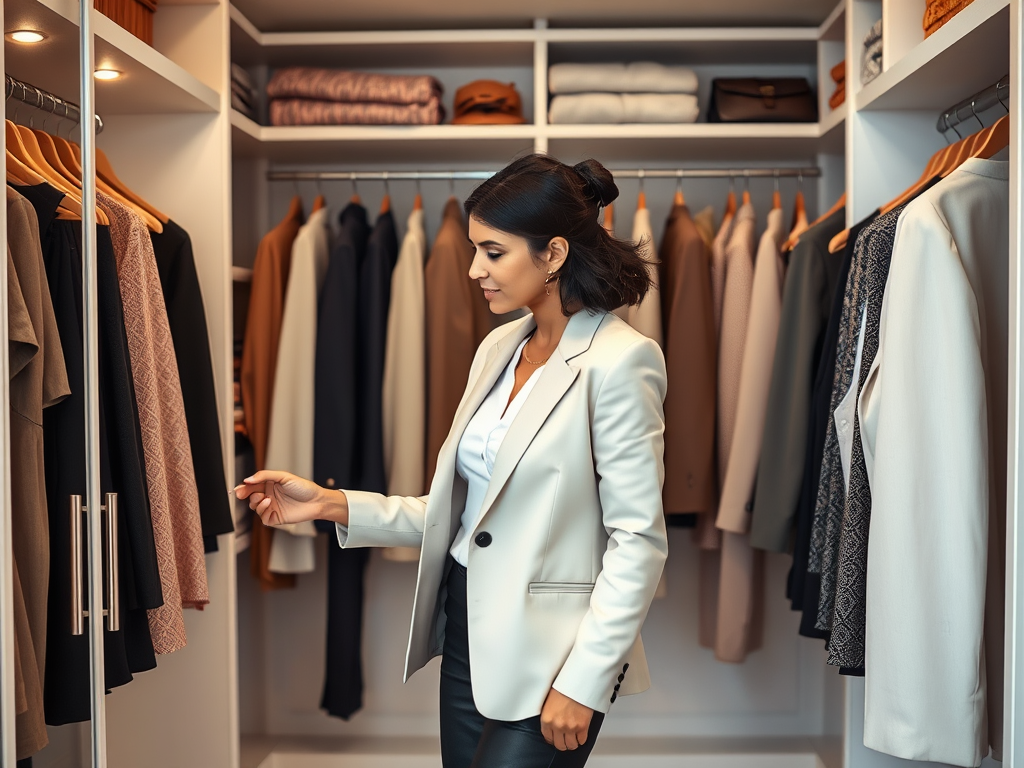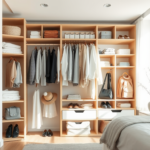The Ultimate Guide to Dressing Professionally as a Woman
In the dynamic world of today’s business landscape, the way a woman dresses can not only shape her professional identity but also influence opportunities and perceptions. Dressing professionally goes beyond mere clothing; it encapsulates a sense of self-assuredness, respect for oneself and others, and an understanding of the environment in which one operates. A thoughtful approach to professional attire can signal competence and readiness, helping women navigate various professional settings with confidence. This guide aims to demystify the elements of professional dressing, laying down the foundational rules and offering practical advice to curate an impactful wardrobe. Since the nuances of dressing appropriately can vary by industry and occasion, we will explore categories of professional attire, essential wardrobe pieces, and tips for personalizing your look without compromising professionalism.
Whether you’re stepping into the corporate environment, thriving in a creative role, or preparing for a significant interview, understanding different dress codes is crucial. Many professionals feel overwhelmed by the sheer amount of information available on this topic, leading them to default to uninspired outfits. However, with the right knowledge and guidance, dressing professionally can become an exciting aspect of your career. Prepare to explore the essential components that make up a stunning professional wardrobe, from the basics to the more nuanced details that can elevate your appearance. Uncover the secrets to not only fitting in professionally but standing out for all the right reasons.
Understanding Different Dress Codes

Different workplaces have varying expectations when it comes to dress codes. Understanding these can help you navigate the professional landscape more effectively. There are generally three primary styles that women can consider, each with its own unique flair and requirements. Below, we discuss these styles in detail, ensuring you are well-prepared to choose the right outfit for any occasion.
Business Professional
Business professional attire is the most formal dress code you’ll encounter. It typically includes tailored suits, blazers, and polished, closed-toe shoes. Understanding how to mix and match these elements is crucial for achieving a professional appearance. Another thing to keep in mind is the colors and patterns that work best for this setting; solid colors tend to communicate authority and competence.
- Tailored pants and skirts
- Button-up shirts or blouses
- Closed-toe heels or loafers
Business Casual
This less formal dress code allows for more personal expression while still maintaining professionalism. Here, you can showcase your personality with a slight twist on traditional styles. Business casual can include smart blouses paired with tailored trousers or even chic dresses. It’s important to ensure that your attire remains polished and appropriate, even when the dress code is relaxed.
- Chinos or dress pants
- Stylish flats or low heels
- Cardigans or casual blazers
Creative Professional
If you work in a creative industry, dress codes can be more relaxed, allowing you to infuse your wardrobe with vibrant colors and unique prints. While it’s essential to express your style, balancing creativity with professionalism is key. Options for creative professional attire can include unconventional silhouettes or artistic accessories. You want to ensure your clothing communicates confidence without crossing into casual territory.
- Artistic blouses with playful patterns
- Stylish trousers with a relaxed fit
- Unique shoes that express your style
Building Your Professional Wardrobe

Creating a professional wardrobe involves investing in versatile essentials that can be mixed and matched. Focus on classic pieces that stand the test of time and can transition between different business settings. Below is a comprehensive table detailing essential wardrobe pieces along with their purpose and recommended styles:
| Wardrobe Essential | Description | Examples |
|---|---|---|
| Blazers | Elevates any outfit and provides a polished look. | Classic black, navy, or colorful options. |
| Skirts/Trousers | Flexible for various occasions, from formal to casual. | Pencil skirts, tailored trousers, or wide-legged pants. |
| Blouses/Tops | Effective for layering and adding personality to outfits. | Silk blouses, knit tops, or tailored shirts. |
Your footwear choices are equally important in completing your professional look. The right shoes can not only elevate an outfit but also provide comfort during long workdays. Comfort should never be sacrificed for style, as walking in pain can detract from your confidence and professionalism.
Accessorizing for Professional Impact
Accessories play a defining role in completing your professional wardrobe. A well-chosen accessory can transform a basic outfit into something stunning and memorable. However, the key is moderation; over-accessorizing can detract from your overall appearance. A flawless selection of jewelry, bags, and other accessories can enhance your look without overwhelming it. Here’s a look at some essential accessories that help create a polished professional image.
Jewelry and Watches
Jewelry should be understated yet elegant, serving to complement your outfit rather than dominate it. Opt for classic pieces that reflect professionalism, such as stud earrings or simple necklaces. A timeless watch can also serve a dual purpose; it keeps you punctual while adding a sophisticated touch to your look. Remember, subtlety is key here, so choose pieces that resonate with your personal style while adhering to professional norms.
Bags and Briefcases
Your bag speaks volumes about your professionalism. Choose a bag that balances functionality and style, suitable for carrying documents and personal items. Opt for leather or high-quality synthetic materials in neutral colors, making sure it can accommodate daily essentials without appearing bulky. A sleek, stylish briefcase can not only elevate your outfit but also has the practical use of organization.
Seasonal Dressing Tips
As the seasons change, so too should your wardrobe. Each season presents unique challenges and opportunities for maintaining a professional appearance. Understanding how to adapt your attire can ensure you remain comfortable while looking great throughout the year.
Summer Attire
During the warmer months, consider lightweight fabrics that allow for breathability while ensuring you maintain a professional appearance. Opt for sleeveless blouses and lighter skirts, but be cautious to balance comfort and professionalism. Accessories like light scarves can add style without too much warmth. Additionally, consider open-toed shoes, but ensure they remain polished and appropriate.
Winter Wardrobe
In colder months, warmth doesn’t have to mean sacrificing style. Layering is a practical solution that allows you to remain warm while looking stylish. Invest in elegant coats, turtle necks, and chic boots that blend style and function. Look out for materials that balance warmth and professionalism, such as cashmere-blend sweaters or wool skirts. This not only ensures comfort but allows for adaptability in various professional scenarios.
Personal Style vs. Professionalism
Striking the right balance between personal style and showcasing professionalism can be a challenge. It’s important to embrace your individuality while still adhering to workplace expectations. One way to achieve this is to identify key pieces that resonate with your personal taste but fit well within your workplace’s culture. Experimenting with accessories or color combinations can allow you to express your unique style without being irrelevant.
Incorporating elements of your personal style can give your professional attire life. For instance, vibrant accessories can boost your outfit from basic to eye-catching while still being professional. Create a signature look that reflects your personality, whether that includes specific colors, fabrics, or styles. However, always remember to assess the appropriateness of these personal touches against your professional environment. Balance is essential; feel free to stand out, but ensure it aligns with your company’s culture.
Conclusion
Dressing professionally as a woman involves more than simply following a list of rules; it’s about understanding your environment, expressing yourself creatively, and making a lasting impression. From identifying dress codes to building a versatile wardrobe, each aspect contributes to projecting confidence and competence. By knowing how to accessorize thoughtfully, adapt to seasonal changes, and embrace your personal style, you can navigate the complexities of dressing professionally. Keep in mind that the ultimate goal is to feel comfortable and self-assured in what you wear, allowing your skills and capabilities to shine.
Frequently Asked Questions
- What should I wear for a job interview? Wear a tailored outfit that reflects business professional attire, including a blazer, fitted blouse, and dress pants or a knee-length skirt.
- Are jeans appropriate for business casual settings? Yes, dark wash, tailored jeans can work in business casual environments when paired with a smart blouse or blazer.
- How can I maintain professional attire on a budget? Invest in key pieces that mix and match well, shop sales, and consider second-hand stores for quality items at lower prices.
- What are some tips for dressing professionally in a creative field? Opt for stylish but polished outfits that showcase your personality—think colorful blazers, creative patterns, and unique accessories while maintaining a neat appearance.
- Is it okay to wear open-toed shoes in a professional setting? Open-toed shoes can be appropriate in certain business casual environments, but it’s best to confirm your company’s culture and guidelines first.


